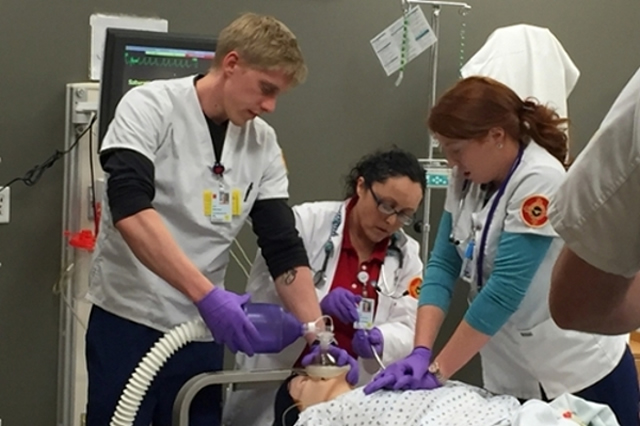
Nursing ETDs
Publication Date
Spring 5-10-2019
Abstract
In the United States, more than 2.5 million people struggle with opioid use disorder. Compared to people living in urban areas, rural residents are twice as likely to overdose from opioid misuse. Reasons for this increase include excessive opioid prescribing and illegal diversion of opioids. This holds true in the rural counties of northern New Mexico, where drug overdose deaths are among the highest in the nation. Although medication-assisted treatment (MAT) with buprenorphine, methadone, or naltrexone is globally accepted as the most effective treatment, it is still accessed half as often rurally. The reasons for this imbalance are unknown, and there is no information about how the perspectives and knowledge of rural individuals seeking MAT might contribute. To identify key drivers of this imbalance, a descriptive qualitative design was used (a) to explore the perspectives and knowledge of individuals in rural New Mexico with opioid use disorder regarding medication-assisted treatment and (b) to describe their experiences seeking MAT.
Six major themes emerged from the data. As participants became addicted, “The chase” for opioids encompassed a set of lifestyle choices aimed at avoiding the sickness and pain of opioid withdrawal. Participants described several challenges in obtaining MAT that made it “hard to have to wait,” including long wait lists, ultimately leading to drug diversion for the purpose of self-medicating. Overwhelmingly, participants favored buprenorphine over heroin and buprenorphine over methadone, with the general themes emerging that suboxone was “better” because it helped them to live a “normal life.” Finally, participants discussed the importance of working with a knowledgeable provider, accessing self-help groups, and building a support system for “staying clean.” Despite treatment successes with MAT, participants continued to experience stigma in the community, establishing the theme that “no matter what, you’re labeled.” In conclusion, although key system-level barriers have been identified and addressed, the rural-urban disparity in access to MAT persists. Results from this study contribute to our knowledge about opioid use disorder (OUD) and its treatment in rural communities. These findings reveal the important factors contributing to the rural-urban MAT disparity, leading to clinical and policy implications that could serve to address this problem.
Degree Name
Nursing
Level of Degree
Doctoral
Department Name
College of Nursing
First Committee Member (Chair)
Kim J. Cox
Second Committee Member
Emily Haozous
Third Committee Member
Leslie Hayes
Fourth Committee Member
Lawrence Leeman, S. Van Roper & Sharon Ruyak
Sponsors
American Psychiatric Nurses Association
Keywords
Medication-Assisited Treatment, Opiod Use Disorder, Rural Health, Opioid
Language
English
Document Type
Dissertation
Recommended Citation
Scorsone, Krista L.. "EXPLORING INDIVIDUAL EXPERIENCES OBTAINING MEDICATION-ASSISTED TREATMENT FOR OPIOID USE DISORDER IN RURAL NEW MEXICO." (2019). https://digitalrepository.unm.edu/nurs_etds/46
